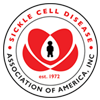Trusted Resources: Evidence & Education
Scientific literature and patient education texts
Stigma and illness uncertainty: adding to the burden of sickle cell disease
source: Hematology
year: 2018
authors: Blake A, Asnani V, Leger RR, Harris J, Odesina V, Hemmings DL, Morris DA, Knight-Madden J, Wagner L, Asnani MR
summary/abstract:BACKGROUND:
Persons with sickle cell disease (SCD) experience multiple medical and physical complications; the disease also has numerous effects on their social and emotional well-being. We hypothesized that adults with SCD in Jamaica experience moderate levels of stigma and illness uncertainty and that these experiences may be associated with socio-demographic factors, such as gender, educational status and economic status.
METHODS:
We surveyed 101 adults with SCD (54.5% female; mean age 31.6 ± 10.4 years; 72.2% homozygous SCD) using the Stigma in Sickle Cell Disease Scale (Adult), Mishel Uncertainty in Illness Scale (Adult) and a Socio-Demographic questionnaire.
RESULTS:
The mean stigma score was 33.6 ± 21.6 (range: 2-91) with no significant difference between males and females (32.3 ± 21.3 vs. 34.7 ± 21.9; p-value = 0.58). Illness uncertainty was greater in females than in males, though not statistically significant, (88.7 ± 13.5 vs. 82.6 ± 19.2; p-value: 0.07). Stigma and uncertainty had a significant positive correlation (r: 0.31; p-value: 0.01). In an age and sex controlled model, stigma scores were lower with higher numbers of household items (coef: -2.26; p-value: 0.001) and higher in those living in greater crowding (coef: 7.89; p-value: 0.002). Illness uncertainty was higher in females (coef: 6.94; p-value: 0.02) and lower with tertiary as compared with primary education (coef: -16.68; p-value: 0.03).
CONCLUSION:
The study highlights socioeconomic factors to be significant to the stigma and illness uncertainty experiences in SCD. Efforts by healthcare workers to reduce patient illness uncertainty may have additional impact, reducing their stigma.
DOI: 10.1080/10245332.2017.1359898
read more full text
Related Content
-
Hydroxyurea for Sickle Cell Disease TreatmentHydroxyurea is a medicine used to reduce...
-
Adverse Reactions to Pneumococcal Vaccine in Pediatric and Adolescent Patients with Sickle Cell DiseaseSTUDY OBJECTIVE: To review five cases o...
-
Alan W. FlakeDr. Flake is an attending surgeon in the...
-
Webinar Series: Sickle Cell Science: Path to Progress – Sickle Cell Disease Care in the Emergency Department: ...To commemorate Sickle Cell Awareness Mon...
-
Increasing Appointment Attendance: A Vital Opportunity to Improve Health Outcomes for Those Living with Sickle Cell ...Sickle cell disease (SCD) affects approx...
-
A New Era in Sickle Cell Disease Treatment – 2nd Biennial pediatric-adults regional sickle cell disease confer...This biennial educational conference foc...
-
Sickle cell sunday 10, Telling people your limitationshttps://www.youtube.com/watch?v=W9TIORqs...
To improve your experience on this site, we use cookies. This includes cookies essential for the basic functioning of our website, cookies for analytics purposes, and cookies enabling us to personalize site content. By clicking on 'Accept' or any content on this site, you agree that cookies can be placed. You may adjust your browser's cookie settings to suit your preferences. More Information
The cookie settings on this website are set to "allow cookies" to give you the best browsing experience possible. If you continue to use this website without changing your cookie settings or you click "Accept" below then you are consenting to this.




 +myBinder
+myBinder
